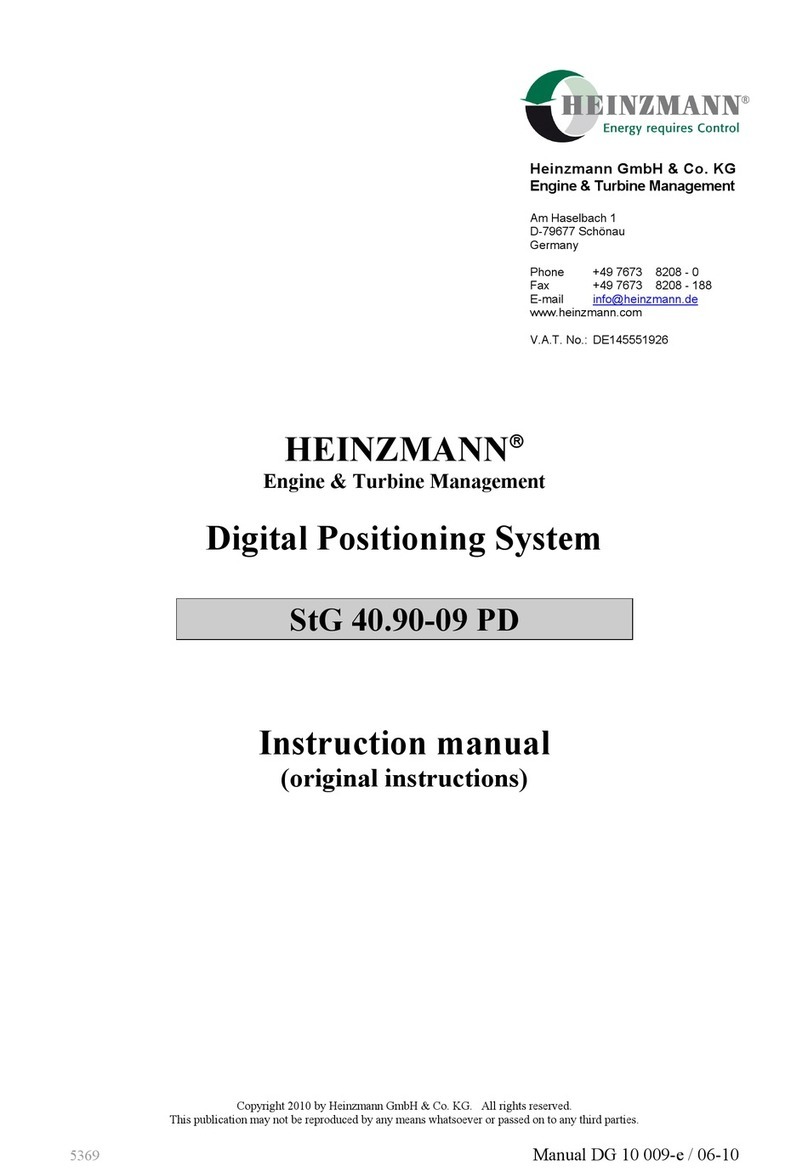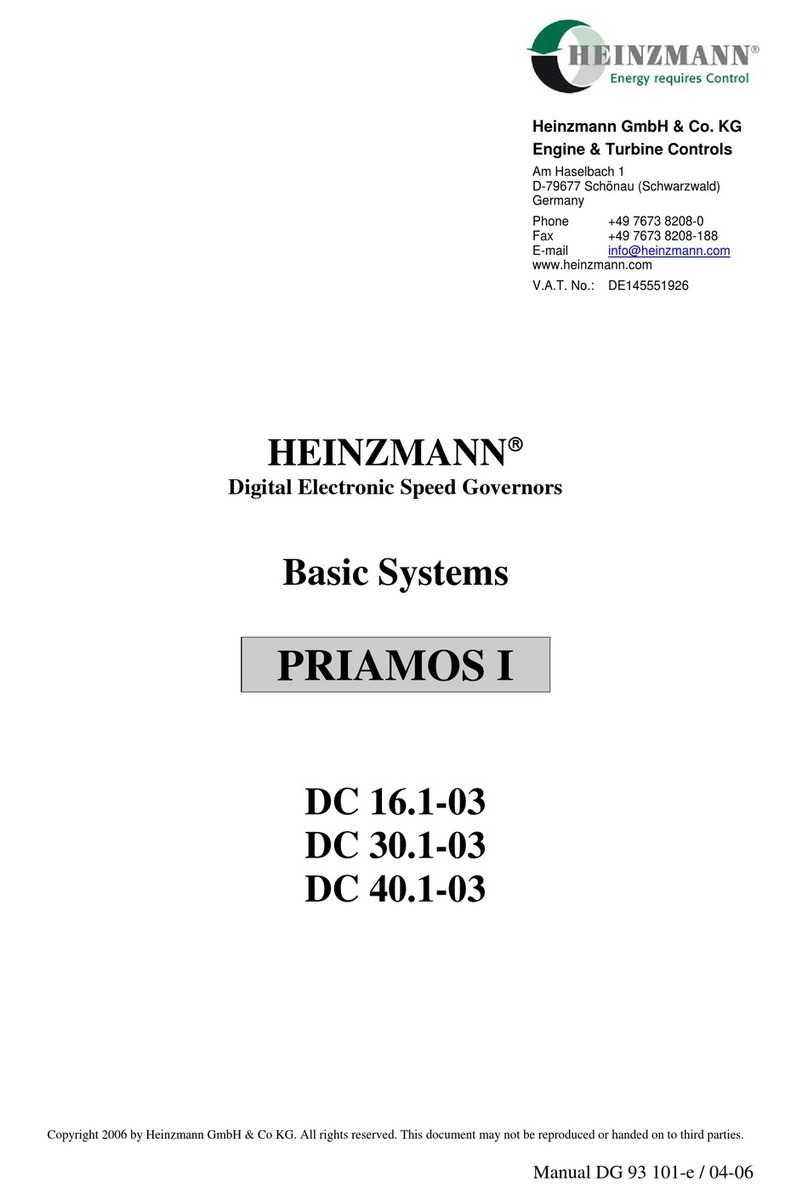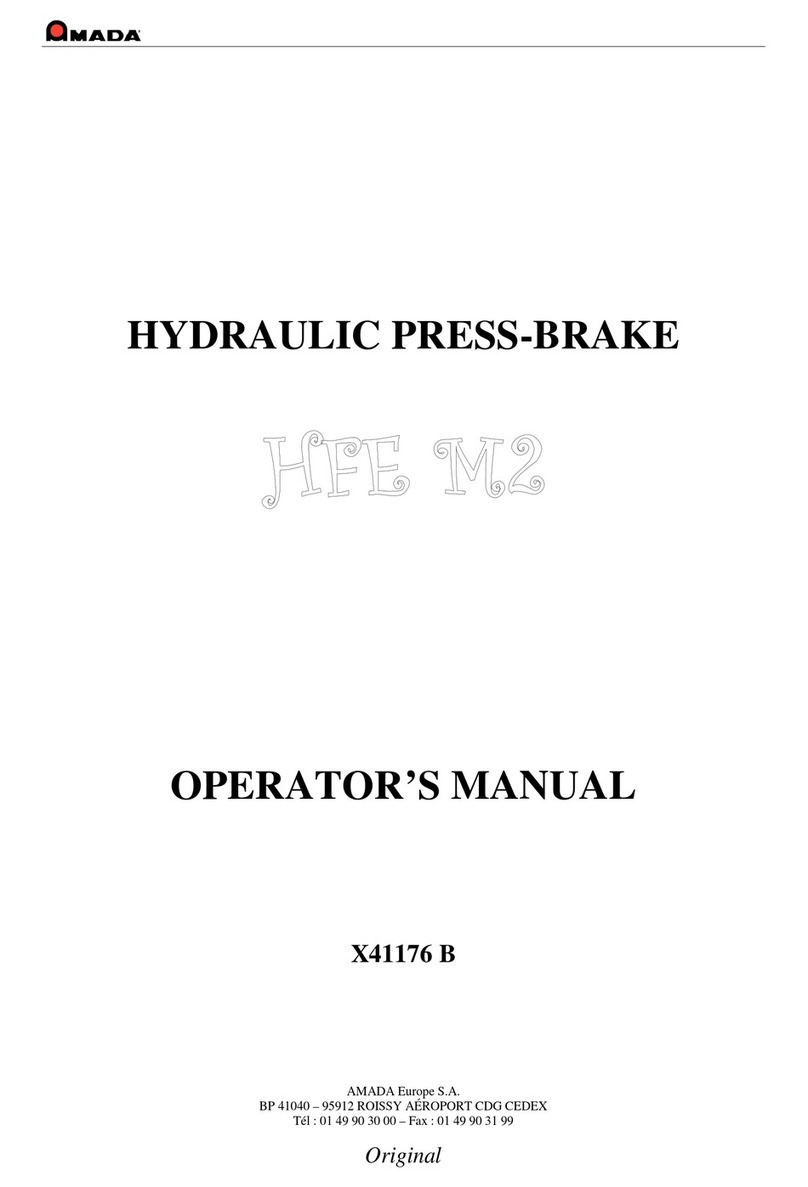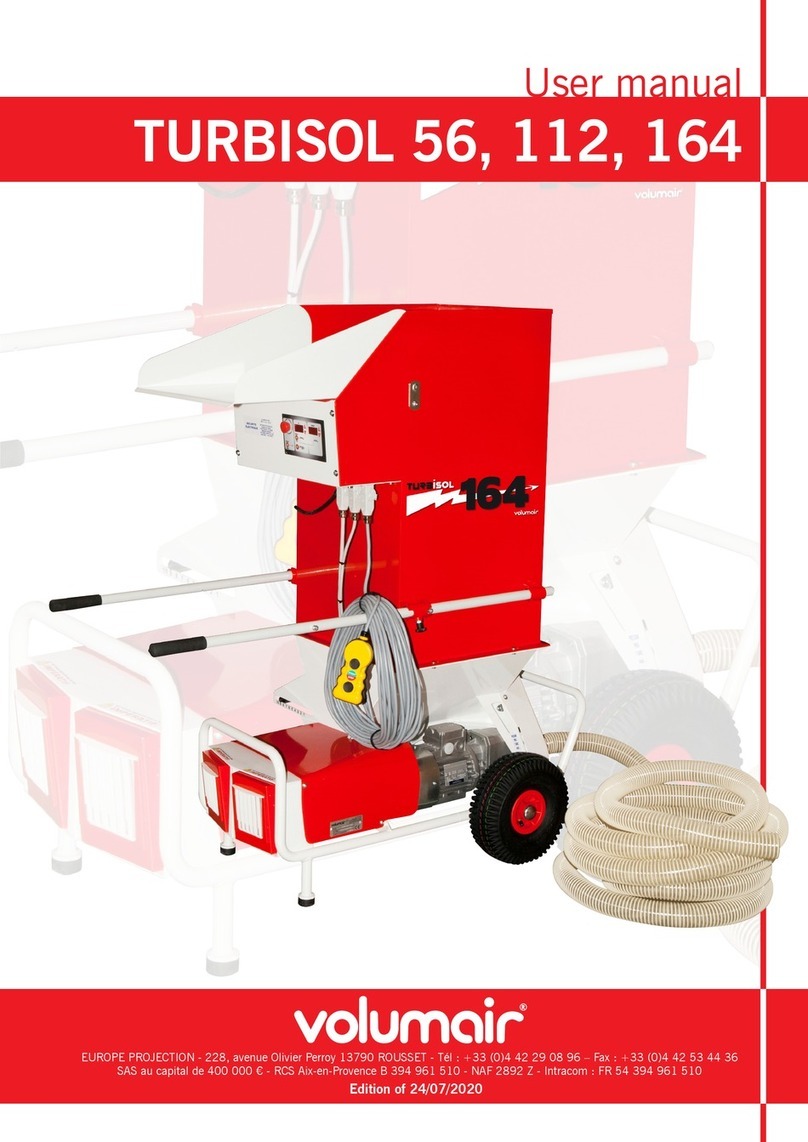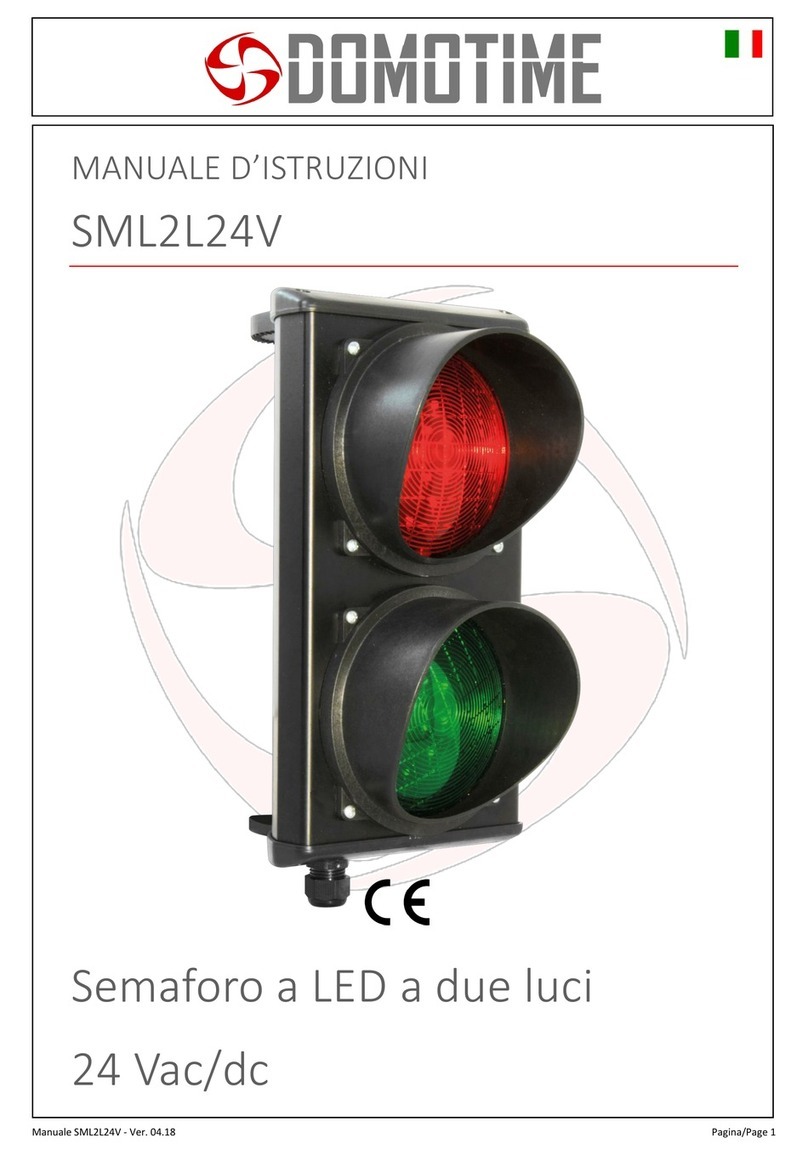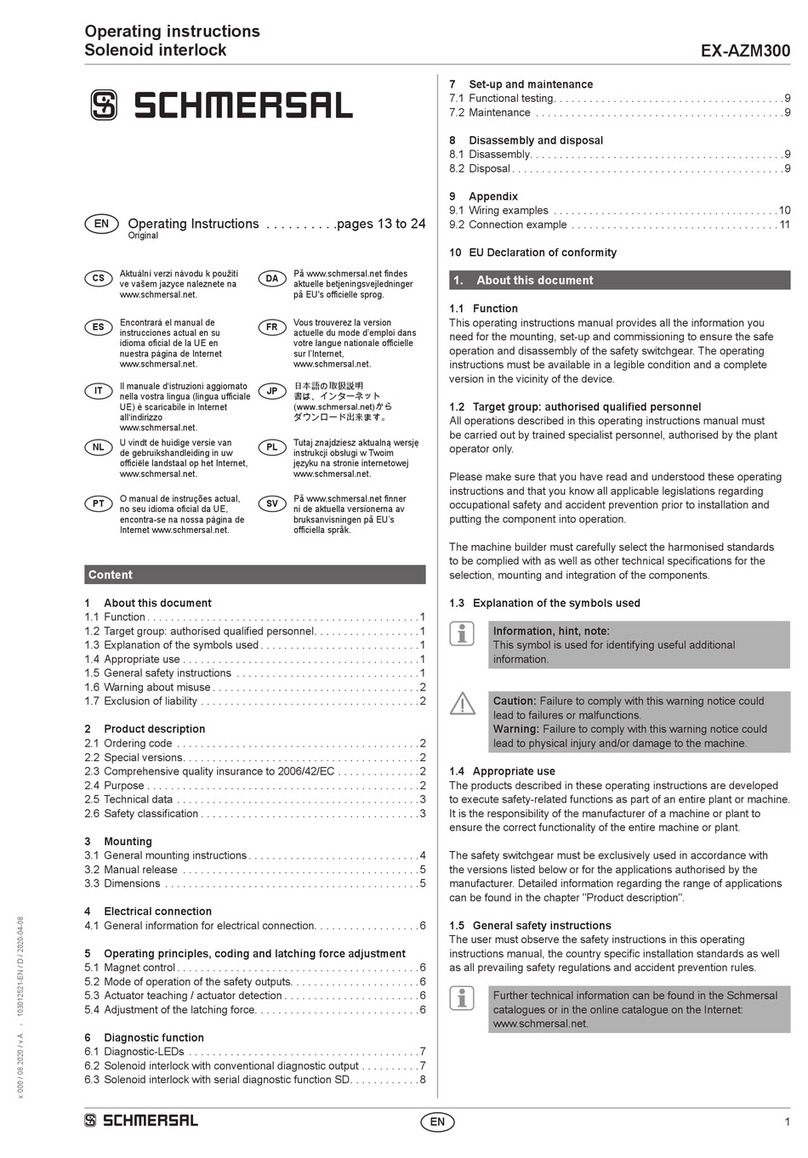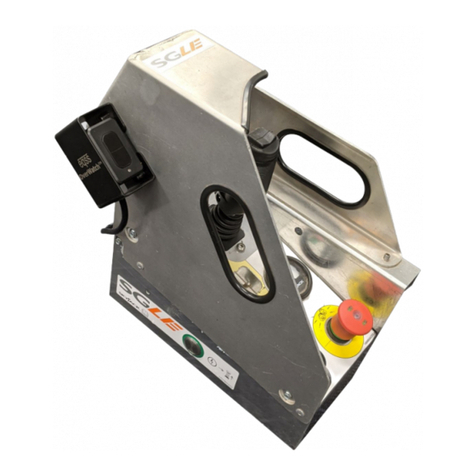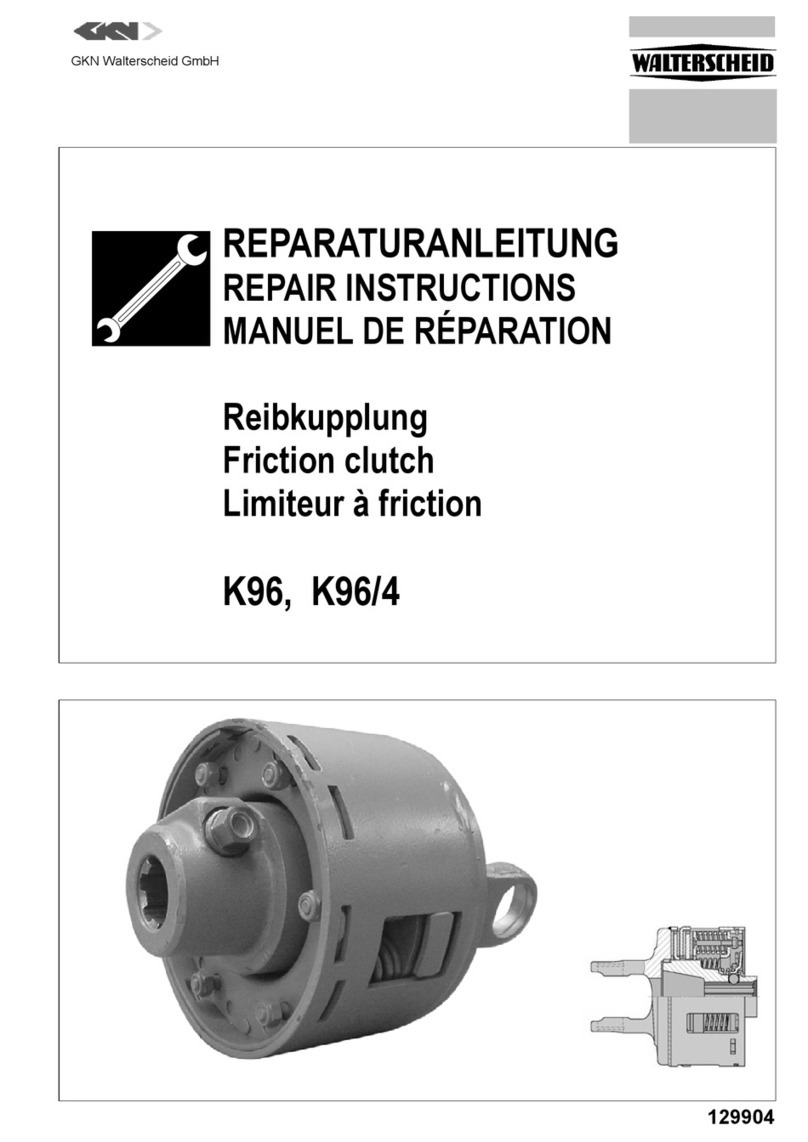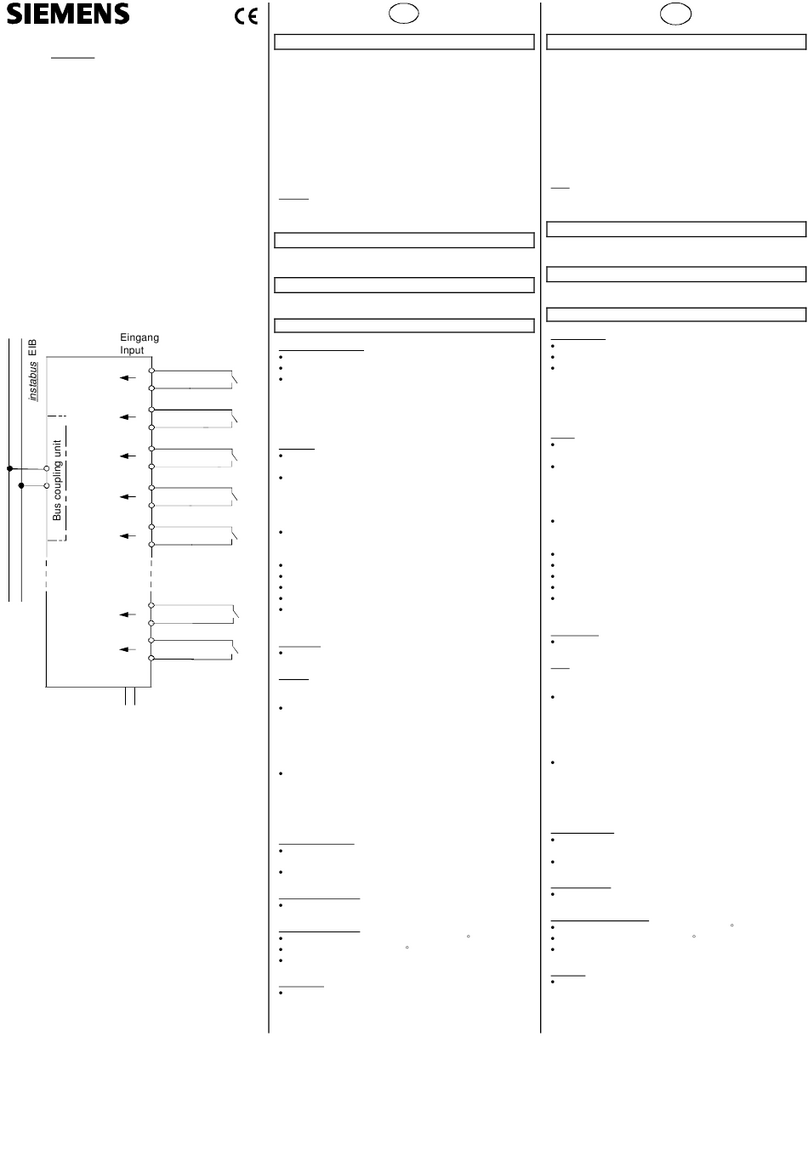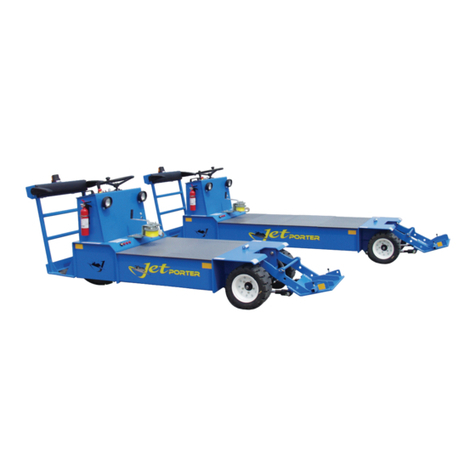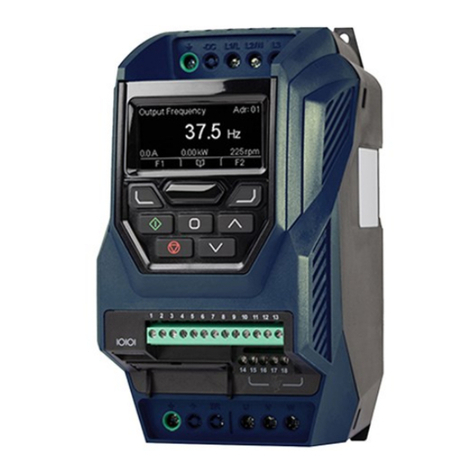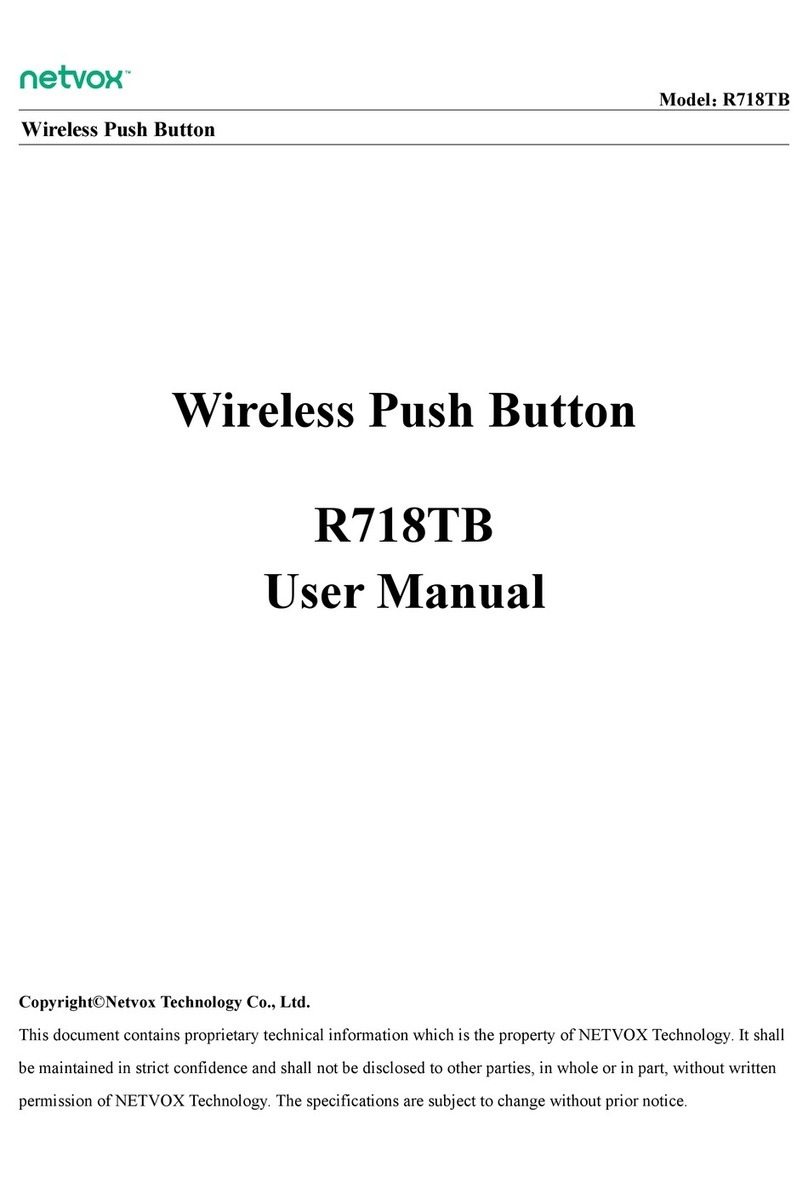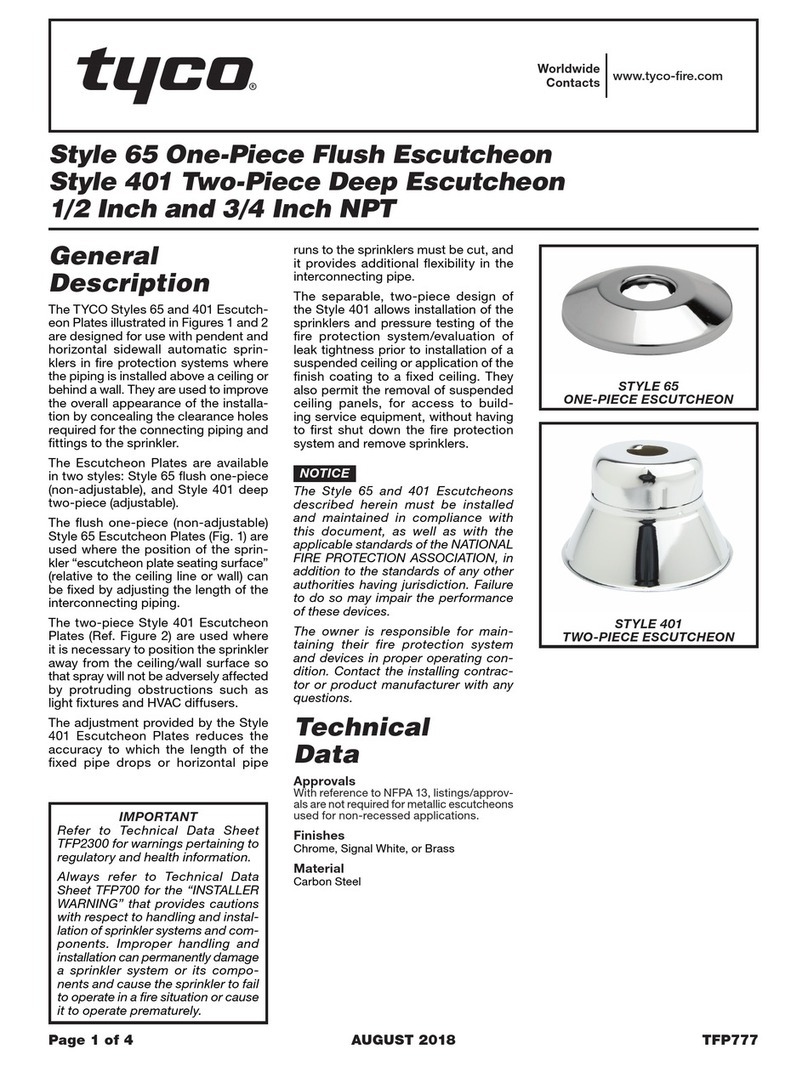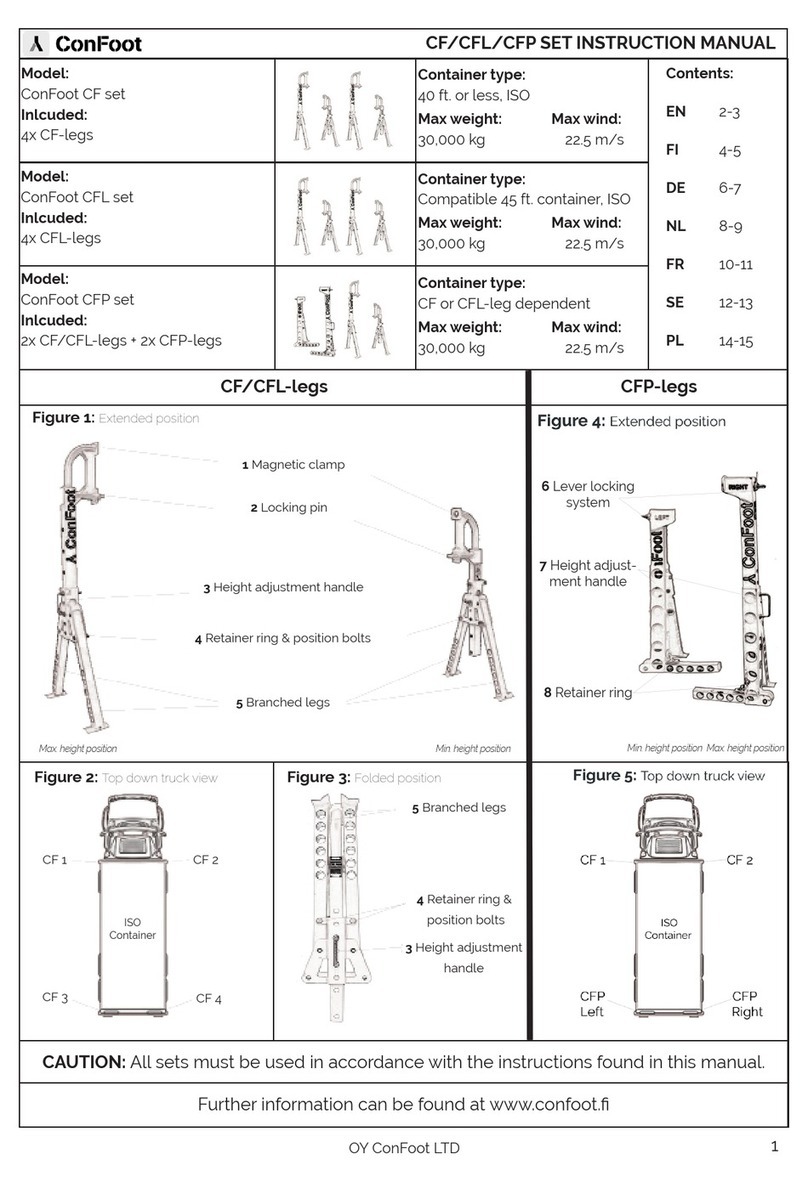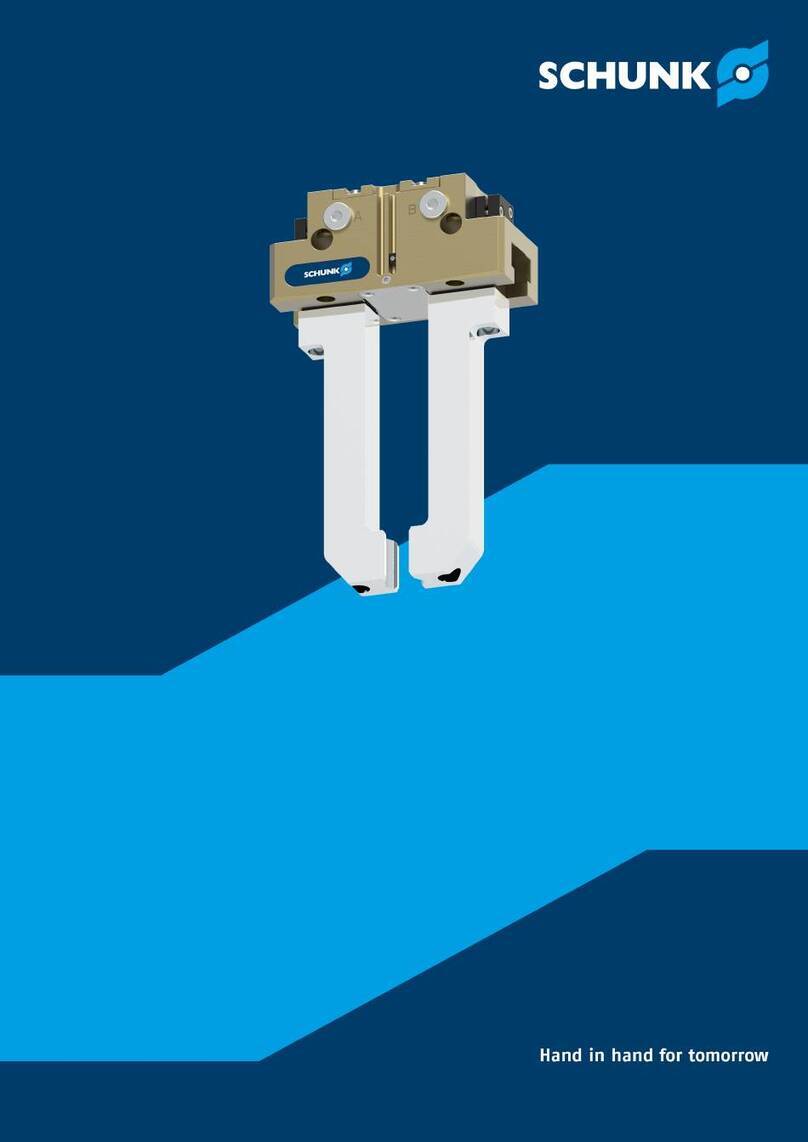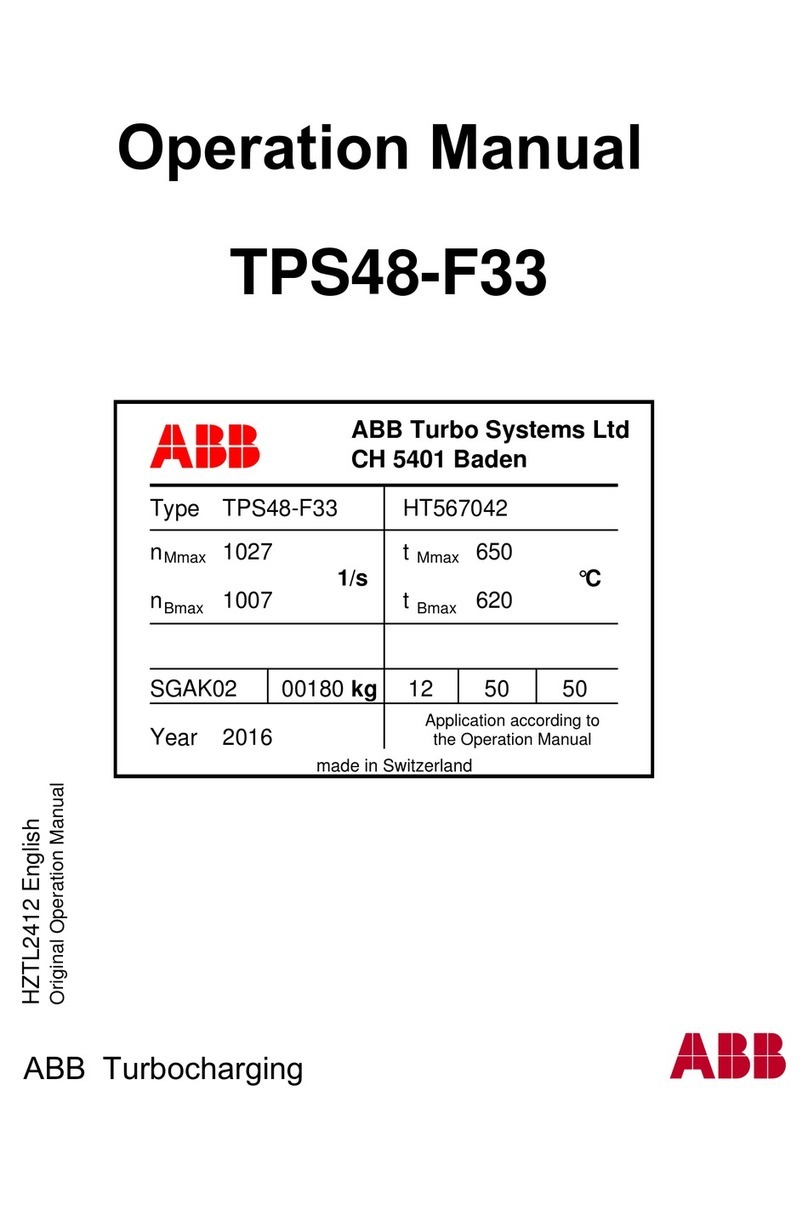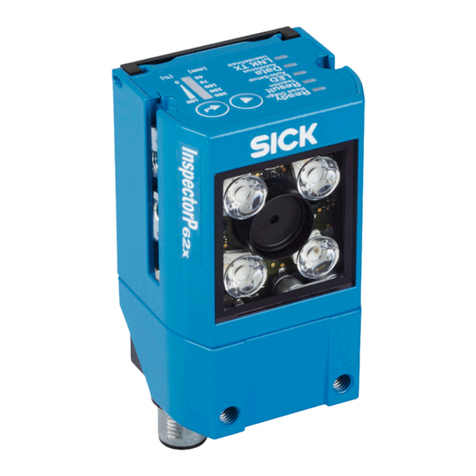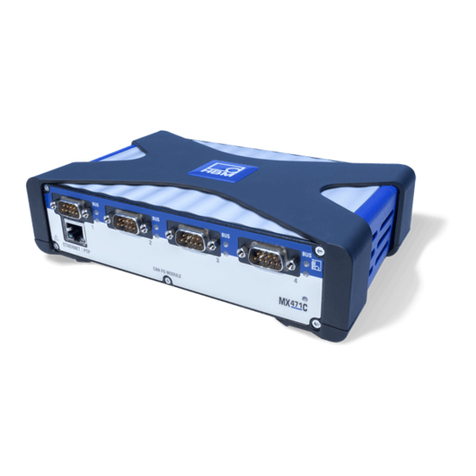Heinzmann 2000 User manual

Copyright 2010 by Heinzmann GmbH & Co. KG. All rights reserved.
This publication may not be reproduced by any means whatsoever or passed on to any third parties.
6184 Manual DG 10 001-e / 07-10
Heinzmann GmbH & Co. KG
Engine & Turbine Management
Am Haselbach 1
D-79677 Schönau
Germany
Phone +49 7673 8208 - 0
Fax +49 7673 8208 - 188
www.heinzmann.com
V.A.T. No.: DE145551926
HEINZMANN
Engine & Turbine Management
Digital Positioning System 2000
StG 2040.xx-SV-PD
and
StG 2080.xx-SV-PD


Digital Positioning System 2000
The appropriate manuals must be thoroughly studied before
installation, initial start-up and maintenance.
All instructions pertaining to the system and safety must be followed in
full. Non-observance of the instructions may lead to injury to persons
and/or material damage.
HEINZMANN shall not be held liable for any damage caused through
non-observance of instructions.
Independent tests and inspections are of particular importance for all
applications in which a malfunction could result in injury to persons or
material damage.
All examples and data, as well as all other information in this manual
are there solely for the purpose of instruction and they may not be used
for special application without the operator running independent tests
and inspections beforehand.
HEINZMANN does not guarantee, neither expressly nor tacitly, that
the examples, data or other information in this manual is free from
error, complies with industrial standards or fulfils the requirements of
any special application.
To avoid anyinjury to persons and damage to systems, the following
monitoring and protective systems must beprovided:
overspeed protection independent of the rpm controller
HEINZMANN shall not be held liable for any damage caused through
missing or insufficiently rated overspeed protection.
thermal overload protection
The following must also be provided for alternator systems:
Overcurrent protection
Protection against faulty synchronisation for excessively-large
frequency, voltage or phase difference
Directional contactor
The reasons for overspeeding may be:
Failure of positioning device, control unit or its auxiliary devices
Linkage sluggishness and jamming
The following must be observed before an installation:
Always disconnect the electrical mains supply before any interventions
to the system.
Only use cable screening and mains supply connections that
correspond with the European Union EMC Directive
Check the function of all installed protection and monitoring systems

Digital Positioning System 2000
Please observe the following for electronically controlled injection
(MVC):
For common rail systems each injector line must be equipped with a
separate mechanical flow-rate limiter.
For unit pump (PLD) and pump-injector unit (PDE) systems, the
fuel enable is first made possible by the solenoid valve’s control
plunger motion. This means that in the event of the control plunger
sticking, the fuel supply to the injection valve is stopped.
As soon as the positioning device receives power, it can actuate the
controller output shaft automatically at any given time. The range of the
controller shaft or control linkage must therefore be secured against
unauthorised access.
HEINZMANN expressly rejects any implied guarantee pertaining to
any marketability or suitability for a special purpose, including in the
event that HEINZMANN was notified of such a special purpose or the
manual contains a reference to such a special purpose.
HEINZMANN shall not be held liable for any indirect and direct
damage nor for any incidental and consequential damage that results
from application of any of the examples, data or miscellaneous
information as given in this manual.
HEINZMANN shall not provide any guarantee for the design and planning
of the overall technical system. This is a matter of the operator its planners
and its specialist engineers. They are also responsible for checking whether
the performances of our devices match the intended purpose. The operator is
also responsible for a correct initial start-up of the overall system.

Contents
Digital Positioning System 2000
Contents
Page
1 Safety Instructions and the signal words and symbols used............................................. 1
1.1 Safety measures under normal operation......................................................................... 2
1.2 Safety measures for maintenance and servicing.............................................................. 2
2 Application and function...................................................................................................... 3
2.1 Proper and intended use................................................................................................... 3
2.2 Function description........................................................................................................ 3
3 Functional Block Diagram.................................................................................................... 5
4 Operating Mode..................................................................................................................... 7
5 Positioning Control System.................................................................................................. 9
5.1 Specification.................................................................................................................... 9
5.2 Design and Mode of Operation...................................................................................... 11
Actuators StG 2040.XX-SV-PD and 2080.XX-SV-PD.................................................. 11
5.3 Installation..................................................................................................................... 12
5.4 Actuator Specification................................................................................................... 12
5.5 Dimensions.................................................................................................................... 13
6 Regulating Linkage............................................................................................................. 15
6.1 Length of Lever Arm..................................................................................................... 15
6.2 Connecting Linkage....................................................................................................... 15
6.3 Linkage Adjustment for Diesel Engines........................................................................ 15
6.4 Linkage Adjustment for Carburettor Engines................................................................ 16
7 Electrical Connection.......................................................................................................... 17
7.1 Wiring Diagram............................................................................................................. 17
7.2 Connection of Power Supply......................................................................................... 18
8 Figure List............................................................................................................................ 21
9 Download of Manuals ......................................................................................................... 23


1 Safety Instructions and the signal words and symbols used
Digital Positioning System 2000 1
1Safety Instructions and the signal words and symbols used
This publication offers practical safety instructions to indicate the unavoidable residual risks
involved when operating the machine. These residual risks involve hazards to
- Personnel
- Product and machine
- The environment
The primary aim of thesafety instructions is to prevent personal injury!
The signal words used in this publication are specifically designed to direct your attention to possible
damage extent!
DANGER indicates a hazardous situation the consequence of which could
be fatal or severe injuries if it is not prevented.
WARNING indicates a hazardous situation which could lead to fatal
injury or severe injuries if it is not prevented.
CAUTION indicates a hazardous situation which could lead to minor
injuries if it is not prevented.
NOTICE indicates possible material damage.
Safety instructions are not only denoted by a signal word but also by
hazard warning triangles. Red hazard warning triangles indicate
immediate danger to life. Yellow hazard warning triangles indicate a
possible risk to life and limb. Hazard warning triangles can contain
different symbols to illustrate the danger. However, the symbol used is no
substitute for the actual text of the safety instructions. The text must
therefore always be read in full!

1 Safety Instructions and the signal words and symbols used
2 Digital Positioning System 2000
1.1 Safety measures under normal operation
The system may be operated by qualified and authorised personnel only,
who are both familiar with the operating instructions and who can carry
them out!
Before switching on the system, check and ensure that:
only authorised personnel are in the machine’s operating range
no-one can be injured by the machine starting up
Before each start of the motor:
Always check the system for visible damage and ensure it is not put into
operation unless it is in perfect condition! Always notify the responsible
department immediately about any defects
Check and ensure that all safety devices are in proper working condition
Remove all material and objectives surplus to requirements from the operating
range of the system or motor
1.2 Safety measures for maintenance and servicing
Before starting maintenance or repair work:
Block off access to the machine’s working area for unauthorised persons!
Put up an information board that indicates that such work is underway
Switch off main switch for mains supply and secure with a padlock! The key
to the padlock must be held by the person carrying out the maintenance or
repair work
Ensure that all parts that are capable of being touched have cooled down to
ambient temperature and have been isolated from the mains
Re-fasten loose connections
Replace any damaged lines or cables immediately
Keep the switch cabinet closed at all times! Access is solely for authorised
persons with key/tools
Never use a water spray or high-pressure cleaners on switch cabinets and other
electrical equipment enclosures for cleaning purposes! Risk of short circuit
and corrosion to positioning device

2 Application and function
Digital Positioning System 2000 3
2Application and function
2.1 Proper and intended use
The positioning devices StG 2040-PD and StG 2080-PD are to be used solely for control
applications on engines. They are intended for use in an industrial environment. When
operated outdoors, additional protective measures against weather are also required.
Signals are exchanged through electrical signals. Because transmission may be interfered
with by external circumstances or influences, the user must provide additional safety
devices to match the application case.
In individual cases, the following must be coordinated with the manufacturer
HEINZMANN:
Each use which deviates from the above mentioned
Modifications to the device
Use in extreme, ambient conditions that deviate from the specification
(dust, temperature, wetness)
Use under powerful electrical or electromagnetic fields
Use in aggressive atmospheres or vapours
Use in potentially explosive areas
A written opinion from the manufacturer must always be procured in the event of any
obscurities, queries or missing statement.
2.2 Function description
Positioners show a directly proportional correlation between the position of the actuator
output shaft and a command input signal. StG 2040-PD and StG 2080-PD are electrical
positioners with rotating output shaft. They are actuated by an external, electrical position
set point signal, and thereby automatically regulate the mechanical position of their output
shafts. The position set point is transmitted as a current, voltage or PWM signal to each
positioning device. For operation the devices must be connected to an external mains
supply.


3 Functional Block Diagram
Digital Positioning System 2000 5
3Functional Block Diagram
Figure 1: Functional block diagram


4 Operating Mode
Digital Positioning System 2000 7
4Operating Mode
The input signal, i.e. the position setpoint for the actuator output shaft is sent to an
actual/setpoint comparator receiving the actual value from the actuator feedback. Subsequent
signal processing for position control is performed by a microcontrol.
The position control circuit incorporates a 4-quadrant amplifier which allows to drive the
actuator electrically in either direction. This ensures optimum utilization of the actuator's
rotational force. Together with very low current consumption in steady state operation heat
build-up in the actuator also is reduced.
The feedback signal, i.e. the output shaft position signal, is available analogue as acurrent
signal, a voltage signal or as PWM-signal. It can be used as well for further processing as for
indicating actuator position.
Due to the programable microcontrol a lot of functions and capabilities of the Digital
Positioning System 2000 can be determined by parameterization. This offers various options
for the systems setting up and its configuration.
For instance linear output characteristic, range, type and sense of input and output etc. can be
adapted to users requirements.


5 Positioning Control System
Digital Positioning System 2000 9
5Positioning Control System
StG 2040.XX-SV-PD and StG 2080.XX-SV-PD
5.1 Specification
nom. supply voltage 24 V DC
max. voltage 33 V DC
min. voltage 9 V DC
maximum ripple voltage at max. actuator current 10 % at 100 Hz
acceptable voltage drop at max. actuator current max. 10 % at control unit
fuse protection 8 A (external, by user)
current consumption approx. 250 mA,
additionally current of actuator
steady state variation ±0.25 %.
storage temperature -40°C to +100°C.
operating ambient temperature -25°C to +85°C.
humidity up to 98 %
“command”
proportional input
alternatively :
current signal 4 ... 20 mA 350 input resistance
voltage signal 0 … 5 V 100 kinput resistance
0 … 10 V 20 kinput resistance
PWM 50 … 500 Hz 100 kinput resistance (pull up optional)
“actual position”
proportional output
alternatively
current signal 4 ... 20 mA max. 220 burden resistance
PWM 50 … 500 Hz lowside switch, 4,7 kpullup
Urest < 1 V at Imax
Imax = 0.3 A

5 Positioning Control System
10 Digital Positioning System 2000
“common alarm”
binary output, galvanically insulated
residual voltage when switching Urest < 3 V at Imax
Imax = 15 mA
Alarms:
- command out of range when signal < 2 mA or signal > 22 mA
- actuator in current limitation
- difference from command to actual position
“shut down”binary input
open normal operation
current signal > 4mA stop
voltage signal > 6 V stop
input resitance Ri > 500
NOTE: All specified values for inputs and outputs etc. are standard values.
For the Digital Positioning System 2000 is programmable, these values can be
adapted and determined specifically to users requirements to a wide range.
The system may be operated by qualified and authorised personnel only, who are
both familiar with the operating instructions and who can carry them out!

5 Positioning Control System
Digital Positioning System 2000 11
5.2 Design and Mode of Operation
With this type of positioner, a multi-polar magnetized permanent magnet is mounted on
the output shaft. Opposite the permanent magnet an armature with the working coils is
mounted. When current is applied to the working coils, torque in one direction is
generated. Reversing current polarity will generate torque in the opposite direction.
By using special materials and long-term lubricants the positioners are maintenance-free
and have a long service life.
The actuator output shaft is provided with a feedback cam for contactless sensing by a
probe transmitting the accurate output shaft position to the control unit.
The control unit is installed on the back side of the positioner under a separate cover,
opposite of the output shaft journal.
When the actuator is driven against a mechancial stop current limitation will take effect
after approx. 20 seconds and reduce current to the actuator to a value sufficiently low to
prevent damage to the actuator.
Actuators StG 2040.XX-SV-PD and 2080.XX-SV-PD
Figure 2: Principle of StG 2040.24-SV-P and 2080.22-SV-P
Output shaft
Armature
Permanant magnet
Feedback cam
Feedback probe

5 Positioning Control System
12 Digital Positioning System 2000
Altogether, this type of positioner offers following advantages:
- High regulating power working in either direction.
- Extremely low current consumption during steady state and relatively low current
consumption on changes of load.
- Indifference to slow voltage changes of power supply; abrupt voltage changes,
however, will cause governor disturbances.
5.3 Installation
The positioner must be firmly mounted on the engine using a support with stiffened
brackets. Vibrating arrangements as may be caused by weak bracket material or missing
stiffenings must be avoided by all means as this will increase vibrations and lead to faster
wear of positioner and linkage.
5.4 Actuator Specification
StG 2040.XX-SV-PD
StG 2080.XX-SV-PD
Effective rotation at the output shaft
68°
68°
Max. torque at the governor output shaft
approx. 4.5 Nm
approx. 8 Nm
Torque in steady state condition
approx. 1.5 Nm
approx. 2,7 Nm
Response time 0-100 % without load
< 100 ms
< 100 ms
Current consumption
maximum current
safe current in steady state
condition
approx. 5 A
max. 1.7 A
approx. 5 A
max. 1.7 A
Storage temperature
-40°C up to +100°C
-55°C up to +110°C
Ambiente temperature in operation
-25°C up to +90°C
-25°C up to +90°C
Humidity
up to 98 %
up to 98 %
Protection grade
IP 65
IP 65
Weight
approx. 6,5 kg
approx. 8,6 kg

5 Positioning Control System
Digital Positioning System 2000 13
5.5 Dimensions
StG 2040.XX-SV-PD
Figure 3: Dimensional drawing StG 2040.XX-SV-PD
StG 2080.XX-SV-PD
Figure 4: Dimensional drawing StG 2080.XX-SV-PD

This manual suits for next models
4
Table of contents
Other Heinzmann Industrial Equipment manuals
